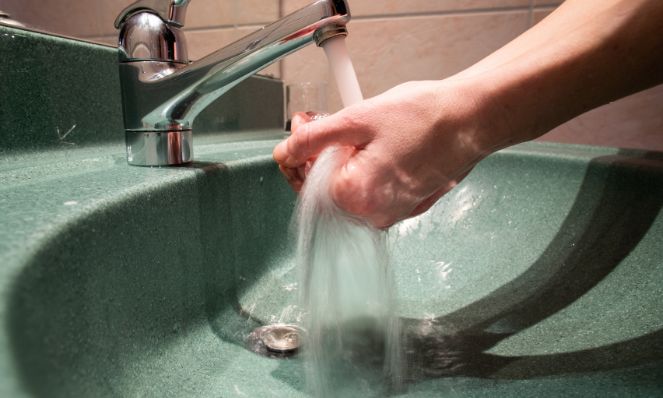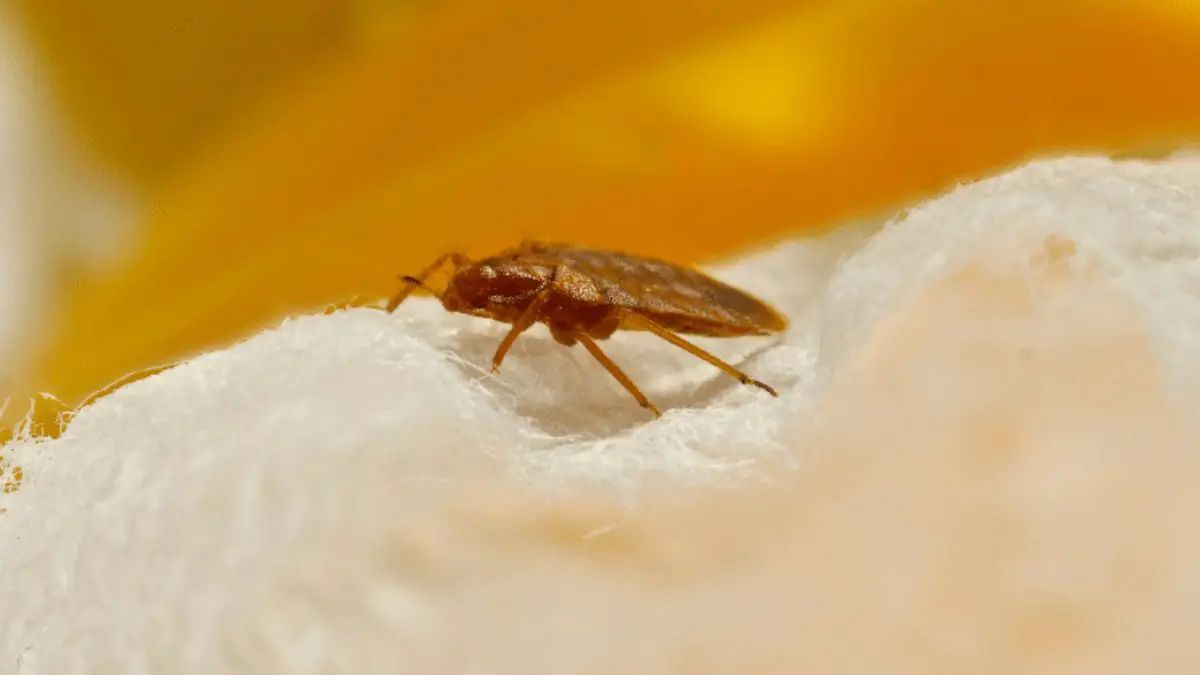Welcome to the age-old debate of hot water bed bug treatment! In this article, we’ll dive into the world of bed bug extermination with hot water and discuss its effectiveness.
Understanding the benefits and limitations of using hot water to eradicate these pesky little insects is vital.
So, let’s get started!
Understanding Bed Bugs and Their Vulnerabilities
Bed bugs are small, flat, oval-shaped, reddish-brown insects that feed solely on the blood of humans and animals.
They are nocturnal and highly skilled at hiding in mattresses, furniture, and other household items.
Although bed bugs don’t transmit diseases, their bites can cause itching, allergic reactions, and even insomnia in some individuals.
The Impact of Hot Water on Bed Bugs
Hot water treatment can be a powerful weapon in your arsenal when combating bed bug infestations.
The impact of hot water on these resilient pests is significant, targeting their vulnerabilities and effectively reducing their numbers.
The high temperatures of hot water pose a serious threat to bed bugs at all life stages, including eggs, nymphs, and adults.
Exposing them to temperatures of at least 120°F (49°C) is key to their eradication. At this threshold, it takes approximately 20 minutes of direct exposure to ensure the elimination of these persistent pests.
Hot water treatment works by destabilizing the delicate balance within a bed bug’s body.
The heat quickly dehydrates them, causing damage to their cell membranes and resulting in their ultimate demise.
Furthermore, the high temperatures disrupt the enzymatic activities within their bodies, further impeding their ability to survive and reproduce.
The impact of hot water is not only limited to direct contact with bed bugs but also extends to their hiding places.
Hot water penetrates cracks, crevices, and other hiding spots when applied to infested areas, reaching those elusive pests and diminishing their population.
This comprehensive approach is essential for effectively eradicating bed bugs and preventing re-infestation.
The Science Behind Hot Water Treatment

In this section, we delve into the science behind hot water treatment and how it affects the biology of bed bugs.
By understanding the underlying mechanisms and temperature thresholds, we can grasp why hot water holds promise as a powerful tool in the fight against bed bug infestations.
Optimal Temperature and Exposure Time
To effectively kill bed bugs using hot water, the temperature should be at least 120°F.
At this temperature, it takes about 20 minutes of exposure to kill all life stages of bed bugs, including eggs, nymphs, and adults.
To effectively kill bed bugs using hot water, maintain a temperature of at least 120°F (49°C).
Exposure to this temperature for about 20 minutes is sufficient to eliminate all life stages of bed bugs, including eggs, nymphs, and adults.
Higher temperatures can reduce the required exposure time for successful eradication. Increasing the water temperature to 130°F (54°C) can expedite the process.
Benefits and Limitations of Hot Water Treatment
Hot water treatment is a fantastic option for tackling bed bugs with several benefits. Not only is it cost-effective, but it’s also environmentally friendly, making it a win-win solution.
The best part? You can easily incorporate it into your regular household cleaning routine without hassle.
However, it’s important to be aware of the limitations of this method. While hot water treatment can be highly effective, it may not reach every nook and cranny where bed bugs love to hide.
These pesky creatures are experts at finding the tiniest crevices and hiding away from prying eyes.
Combining hot water treatment with other complementary extermination strategies is wise to overcome this challenge.
By using insecticides specifically designed for bed bug control, employing steam treatments, vacuuming meticulously, and thoroughly cleaning infested areas, you can enhance the effectiveness of your bed bug eradication efforts.
A multi-faceted approach gives you a better chance of eliminating these unwanted guests.
Effective Hot Water Treatment Techniques for Bed Bug Eradication
When tackling a bed bug infestation, harnessing the power of hot water can be an effective and eco-friendly solution.
This section will explore proven techniques for utilizing hot water to eradicate bed bugs from your home.
Washing Infested Clothing and Bedding
To eliminate bed bugs from clothing and bedding, follow these steps:
- Sort infested items into laundry bags, sealing them tightly to prevent the spread of bed bugs.
- Set your washing machine to the highest temperature (at least 120°F) and use a heavy-duty detergent.
- Dry the washed items on high heat for at least 30 minutes to ensure the complete elimination of bed bugs.
- Inspect and clean the washing machine and dryer after use to prevent reinfestation.
Steam Treatment for Furniture and Upholstery
Steam cleaning is an effective method of using hot water to eradicate bed bugs from furniture and upholstery.
Here’s how to do it:
- Use a steam cleaner with a minimum temperature of 120°F and an attachment suitable for upholstery and furniture.
- Slowly move the steam cleaner over the infested areas, paying close attention to seams, folds, and crevices.
- Allow the treated items to dry completely before using them again.
Hot Water Application Combined with Other Methods
For comprehensive bed bug elimination using hot water, combine it with other strategies like vacuuming or insecticidal sprays.
Vacuuming helps remove bed bugs and their eggs from hard-to-reach places, while insecticidal sprays can provide residual protection against reinfestation.
Precautions Before Using Hot Water Treatment
Before using a hot water treatment, ensure you follow these safety guidelines:
- Wear protective clothing, gloves, and goggles to prevent burns and scalds.
- Keep children and pets away from the treatment area.
- Be cautious when handling electrical appliances near water.
- Test the temperature of the water before use to avoid damage to delicate materials.
Protecting Delicate Items from Heat Damage
Some materials may be sensitive to high temperatures. To protect these items during hot water treatment, consider the following tips:
- Check the care labels and manufacturer’s instructions for temperature recommendations.
- Use a lower temperature setting and a longer exposure time to kill bed bugs without damaging the item.
- Test a small, inconspicuous area before treating the entire item to ensure it can withstand the heat.
Alternative Bed Bug Treatment Methods
While hot water treatment has proven to be a promising approach to combating bed bugs, exploring other effective alternatives that can complement or serve as substitutes for this method is essential.
This section delves into alternative bed bug treatment methods that offer other approaches to eradicating these resilient pests.
Chemical Treatments and Insecticides
When hot water treatment may not be suitable or effective for your specific situation, chemical insecticides offer a viable alternative to consider.
These specialized treatments, often in sprays or powders, are designed to target bed bugs and provide long-lasting protection against infestations.
Hiring professional pest control services can also ensure a thorough application of these chemical treatments, maximizing their efficacy.
Chemical insecticides work by delivering powerful active ingredients that disrupt the bed bug life cycle, eliminate existing populations, and prevent future infestations.
The treatments can be applied directly to infested areas, such as bed frames, cracks, crevices, and other hiding spots where bed bugs are commonly found.
When using chemical insecticides, it is crucial to carefully follow the instructions provided by the manufacturer or the recommendations of the pest control professional to ensure safe and effective application.
Natural Remedies and Non-Toxic Approaches
If you’re searching for eco-friendly alternatives to hot water treatment for tackling bed bugs, some natural remedies and non-toxic approaches are worth considering.
These methods offer effective solutions without relying on harsh chemicals or insecticides, making them safer for you and the environment.
- Diatomaceous earth: A fine powder made from the fossilized remains of tiny organisms. It dehydrates bed bugs and damages their outer shells, leading to their eventual demise. Simply apply a thin layer of food-grade diatomaceous earth in areas where bed bugs hide, such as cracks, crevices, and along baseboards.
- Essential oils: Certain oils, like lavender, tea tree, peppermint, and eucalyptus, have insecticidal properties that repel or kill bed bugs. Dilute the essential oil of your choice with water or carrier oil, and apply it to infested areas or create a spray to target the pests directly. Remember that essential oils might not provide complete eradication and should be used alongside other pest control methods.
- Silica gel: Causes dehydration and ultimately kills bed bugs. You can use silica gel in powder form or specially designed traps. Follow the manufacturer’s instructions when using silica gel for bed bug control.
While natural remedies and non-toxic approaches can be effective, it’s important to consider the severity of the infestation and proper application.
In cases of significant bed bug problems or widespread infestations, combining these natural methods with other strategies or seeking professional help may be necessary.
Bedbug Glue Traps
Glue traps are effective tools for dealing with bed bugs. These traps have sticky surfaces that capture bed bugs as they crawl over them.
You can detect and monitor bed bug infestations by placing the adhesive traps near potential hiding spots.
Glue traps are non-toxic and can be used alongside other methods (like hot water) for better results.
They provide valuable information about the extent of the infestation, but it’s important to remember that they may not eliminate the problem entirely.
Frequently Asked Questions (FAQs)
Can bed bugs survive washing in hot water?
No, bed bugs cannot survive washing in hot water. Exposing them to temperatures of at least 120°F (49°C) during a washing cycle eliminates them.
Does the dryer kill bed bugs?
Yes, the high heat of a dryer can effectively kill bed bugs. Exposing infested items to high temperatures for sufficient time can eliminate these pests.
Does cold water get rid of bed bugs?
No, cold water is not effective in getting rid of bed bugs. These pests are resilient and can survive in cold temperatures. Hot water or other heat treatment methods effectively eliminate bed bugs.
What draws bed bugs out of hiding?
Bed bugs are attracted to warmth, carbon dioxide, and the presence of a potential host. They are primarily drawn out of hiding by the body heat and exhaled carbon dioxide of humans or animals.
Wrapping it Up
In conclusion, hot water is a potent weapon against bed bugs. Its high temperatures effectively eliminate these pests at all life stages.
However, it’s important to note that hot water may not reach all hiding spots.
Combine hot water treatment with other strategies like vacuuming, steam/heater treatments, or insecticides to maximize effectiveness!


